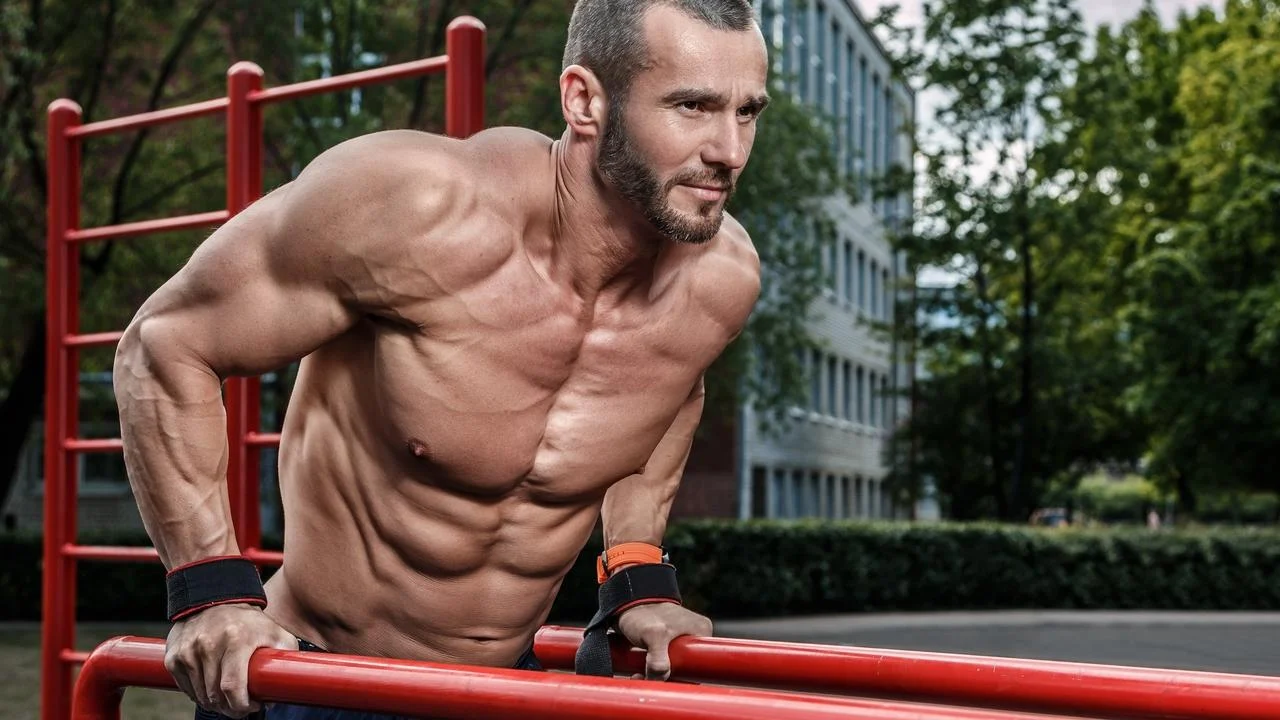When you look at Olympic gymnasts or accomplished street workout athletes, you notice something distinctly different about their physiques compared to traditional bodybuilders. The muscle is denser. The proportions are different. The aesthetic reads as athletic rather than bulky. This distinctive appearance isn’t accidental. It’s the natural result of how the body adapts to calisthenics training stimulus versus barbell training.
Most people assume you need external weights to build serious muscle. Yet countless athletes achieve impressive muscularity with nothing but bodyweight and bars. To understand how, you need to recognize that the calisthenics physique develops through completely different mechanical principles than traditional lifting creates.
How Bodyweight Training Creates Muscle Differently
When you perform a barbell squat, you add weight to create progressive overload. You move that fixed external load through space. Your muscles work to move the resistance. The stimulus is straightforward: add more weight, increase difficulty, drive adaptation.
Calisthenics works completely differently. Instead of adding external weight, you manipulate leverage. You progress from basic variations to increasingly difficult ones. A wall push-up becomes an incline push-up becomes a standard push-up becomes a pseudo-planche push-up. Each progression shifts your bodyweight distribution, increasing the load your muscles must handle.
This leverage-based progression creates distinct mechanical patterns. Your stabilizer muscles work harder because you’re not locked into a barbell’s fixed path. You’re controlling movement through space with minimal external support. This increased stabilization demand creates different muscle fiber recruitment patterns, leading to the denser, more athletic muscle appearance calisthenics training produces.
Certain Muscle Groups Explode With Calisthenics
Your lats and back muscles develop exceptionally well with calisthenics because pull-ups and rows directly challenge them under load. Your triceps grow impressively because dips, pseudo-planches, and hand balance work create extraordinary tricep tension. Your chest develops well through push-up variations and planche progressions.
These muscles are lucky. They get trained directly with progressive bodyweight variations. The stimulus is straightforward and scalable. Other muscle groups aren’t as fortunate.
Where Calisthenics Creates Limitations
Your calves are remarkably resistant to calisthenics stimulus because your bodyweight alone provides insufficient load for serious calf hypertrophy. Your quads receive less direct training stimulus than barbell squats provide. Your lower body generally develops less dramatically with pure calisthenics than your upper body.
This doesn’t mean you can’t build impressive legs with bodyweight training. It means you need creative variations: weighted vests, single-leg progressions, extended time under tension, and strategic use of minimal equipment. Serious calisthenics athletes recognize these limitations and address them strategically.
The Aesthetic Result
These differences combine to create the distinctive calisthenics physique. Upper body development tends to be exceptional because the training stimulus is direct and scalable. Lower body development tends to be more modest unless you specifically address it. The resulting aesthetic is upper-body dominant with athletic proportions.
The muscle itself looks different. Calisthenics athletes develop denser, more defined muscularity because the constant stabilization work creates high muscle fiber recruitment without the joint-stressing loads that heavy barbells create. The result looks more athletic and less swollen than traditional bodybuilding muscularity.
This creates an interesting dichotomy: calisthenics athletes often look more impressive in absolute physique conditioning (more shredded, more defined), while traditional lifters sometimes look more massive. Neither is objectively better. They’re just different adaptations to different training stimuli.
Building Your Calisthenics Physique
Start with progressive variations of compound movements. Master pull-ups before chasing muscle-ups. Master dips before attempting planche progressions. Build a foundation with high-quality reps before attempting extreme progressions.
Recognize which muscle groups need extra attention. Your upper body will probably develop fine. Your legs and calves need strategic work. Use minimal equipment strategically to address these gaps rather than expecting pure bodyweight training to fully develop every muscle group.
Accept that your physique will reflect the training stimulus you provide. The calisthenics physique is distinctive because the training creates different mechanical demands than traditional lifting. That’s a feature, not a bug. If you commit to calisthenics training, you’ll develop the physique that calisthenics training produces: dense, athletic, and distinctly different from traditional gym muscle.




